(House of Bhakti) – The Bona Fide Process: Śrī Śikṣāṣṭaka
The following is a transcription of a discourse delivered by Śrīla Bhaktivedānta Nārāyaṇa Mahārāja in The Netherlands, on July 4, 1997, Published in Discerning the True Sentiments of the Soul
The glories of Śrīla Bhaktivinoda Ṭhākura are so magnificent that even the creator of the universe, Lord Brahmā, 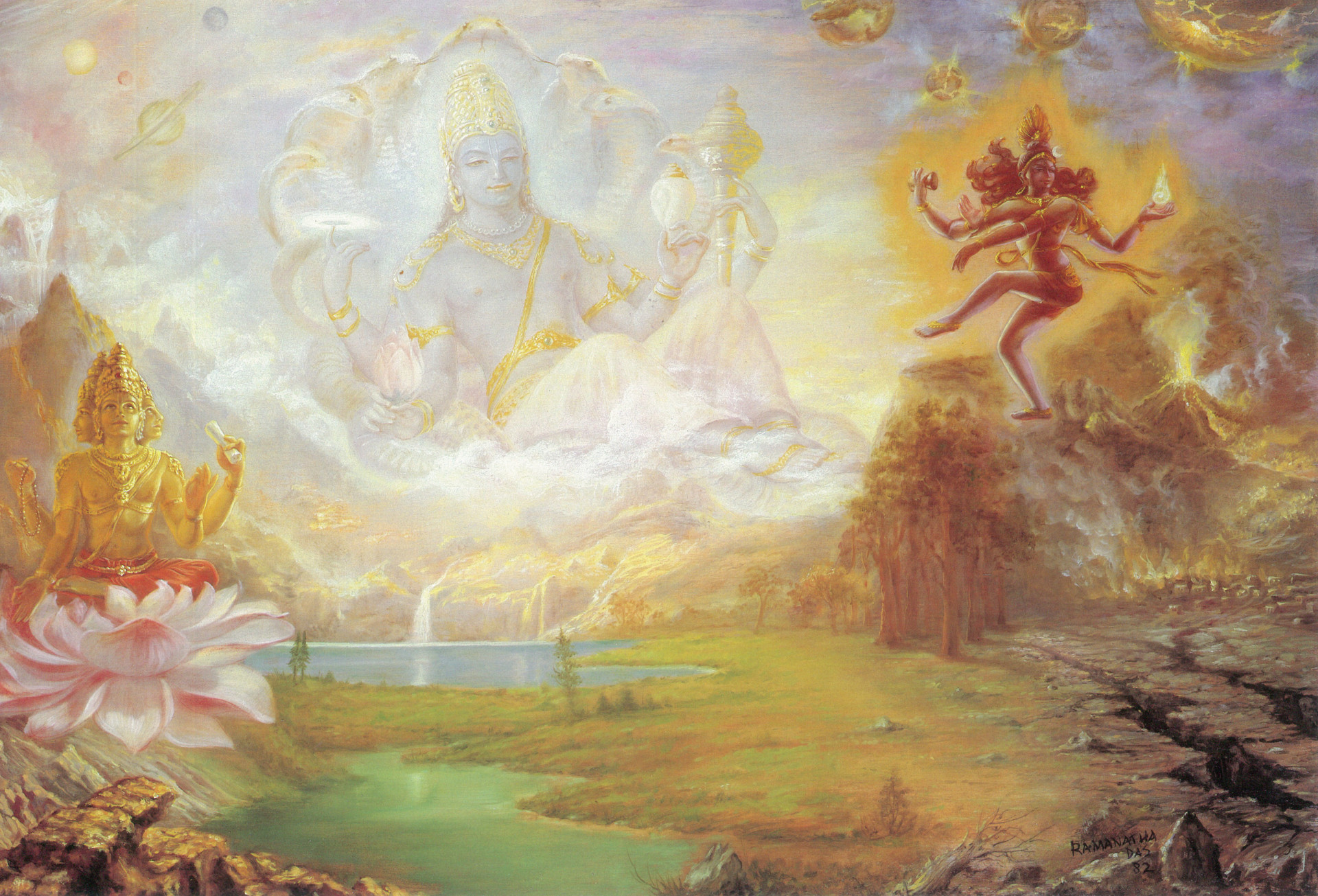 with his four mouths, cannot completely describe them. Śrīla Bhaktivinoda Ṭhākura was a transcendental personality and we are not transcendental, so how can we touch his glories? Only a transcendental person can expound upon them.
with his four mouths, cannot completely describe them. Śrīla Bhaktivinoda Ṭhākura was a transcendental personality and we are not transcendental, so how can we touch his glories? Only a transcendental person can expound upon them.
We have heard from our gurudeva and other Vaiṣṇavas, and we have also read in authentic books, that Śrīla Bhaktivinoda Ṭhākura was given the title ‘Seventh Gosvāmī.’ From the time of the six Gosvāmīs up to his time, no one else was ever designated as such, but during his manifest stay in this world (1838–1914), learned persons and devotees saw his glorious activities and gave him this title. It was he who once again illuminated the true principles of Gauḍīya Vaiṣṇavism. If he had not appeared when he did, these pure teachings would have been forever drowned in an ocean of oblivion.
That time was a dark period for Gauḍīya Vaiṣṇavism. The sahajiyās used to give what they called siddha-praṇālī, the process, or system, that gives spiritual perfection, and even siddha-deha itself, to anyone and everyone, without even knowing whether or not their followers were actually devotees.
The followers neither knew any Gauḍīya Vaiṣṇava philosophy nor did they have any proper etiquette and behaviour, yet they would take shelter of their sahajiyā-bābājī gurus, who pretended to give them their spiritual forms made of eternity, unfathomed bliss, and unlimited knowledge.
They misunderstood Śrī Caitanya Mahāprabhu’s teachings. According to their conception of siddha-deha, Gauḍīya bhajana meant travelling to Vṛndāvana, living there, and having children with others’ wives. They considered that by doing this they had become gopīs. “Come on, come on,” their guru would say to them. “I’m giving you siddha-deha and siddha-praṇālī.”
To whom did he pretend to give siddha-deha? Thinking, “I am this body,” his disciples were completely devoid of knowledge about Śrī Caitanya Mahāprabhu’s teachings. Such persons did not know that they are eternally part and parcel and servants of Kṛṣṇa. Instead of being given gopī-bhāva, they were given ‘goopi’ bhāva.
What are goopis? Goopis are lovers of this world. They think that they should find a lady, live with her, and enjoy sex life. They think this bogus prema to be Śrī Caitanya Mahāprabhu’s philosophy.*
In the name of Gauḍīya Vaiṣṇavism, these sahajiyās would perform Hare Kṛṣṇa kīrtana, following the dead body  during funeral processions, and then take a large payment from the deceased’s rich relatives. In their so-called kīrtanas the word ‘Kṛṣṇa’ did not clearly manifest; it was difficult for the audience to actually find the word “Kṛṣṇa.” The chanters sang, “Hare Kṛṣṇa-a-a-a-a-a-a,” in a fancy melody. Then the audience applauded, calling out, “Oh, very good, very good,” and paid them some rupees. Although those chanters drank wine and ate meat and fish, they still imagined themselves in the realm of proper behaviour, and they were still called Vaiṣṇavas by unintelligent people. Because of such disgraceful displays, learned and educated persons became ashamed and did not want to associate themselves with the words ‘Gauḍīya Vaiṣṇava.’ **
during funeral processions, and then take a large payment from the deceased’s rich relatives. In their so-called kīrtanas the word ‘Kṛṣṇa’ did not clearly manifest; it was difficult for the audience to actually find the word “Kṛṣṇa.” The chanters sang, “Hare Kṛṣṇa-a-a-a-a-a-a,” in a fancy melody. Then the audience applauded, calling out, “Oh, very good, very good,” and paid them some rupees. Although those chanters drank wine and ate meat and fish, they still imagined themselves in the realm of proper behaviour, and they were still called Vaiṣṇavas by unintelligent people. Because of such disgraceful displays, learned and educated persons became ashamed and did not want to associate themselves with the words ‘Gauḍīya Vaiṣṇava.’ **
Śrīla Bhaktivinoda Ṭhākura was, in his time, the first person to preach the factual philosophy of Śrī Caitanya Mahāprabhu to this learned society. By his preaching, people came to know about true transcendental love, prema-bhakti.
Just as King Bhagīratha brought the Ganges River to the Earth, to India, Śrīla Bhaktivinoda Ṭhākura brought the 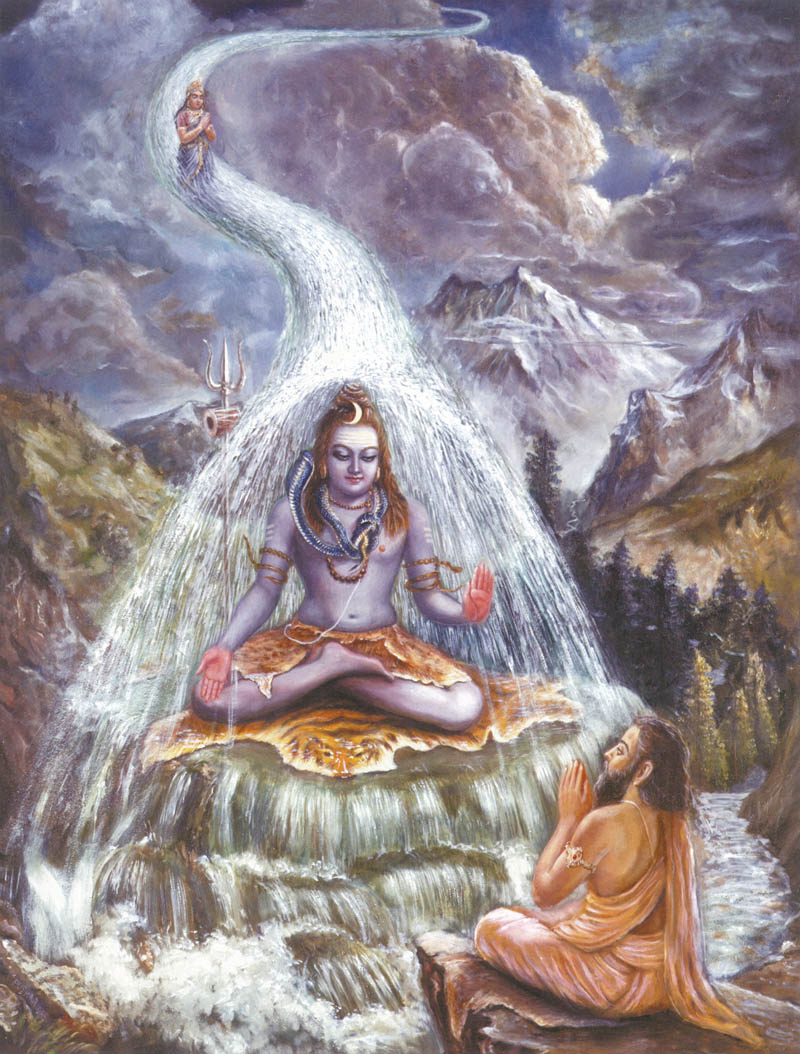 bhakti-gaṅgā (the flowing Ganges River of bhakti) to this world. Because of him, numerous people became inspired to follow pure Gauḍīya Vaiṣṇavism. If he had not appeared, we would not have joined this mission. If Śrīla Bhaktivedānta Svāmī Mahārāja had not come to the West – if he had not gone to Śrīla Bhaktisiddhānta Sarasvatī Ṭhākura and if Śrīla Bhaktisiddhānta Sarasvatī Ṭhākura had not come from Śrīla Bhaktivinoda Ṭhākura, what would have been your fate? Your good fortune is coming from Śrīla Bhaktivinoda Ṭhākura, who preached the very pure doctrines of Śrī Caitanya Mahāprabhu.
bhakti-gaṅgā (the flowing Ganges River of bhakti) to this world. Because of him, numerous people became inspired to follow pure Gauḍīya Vaiṣṇavism. If he had not appeared, we would not have joined this mission. If Śrīla Bhaktivedānta Svāmī Mahārāja had not come to the West – if he had not gone to Śrīla Bhaktisiddhānta Sarasvatī Ṭhākura and if Śrīla Bhaktisiddhānta Sarasvatī Ṭhākura had not come from Śrīla Bhaktivinoda Ṭhākura, what would have been your fate? Your good fortune is coming from Śrīla Bhaktivinoda Ṭhākura, who preached the very pure doctrines of Śrī Caitanya Mahāprabhu.
It is due to a lack of intelligence, to ignorance, that these so-called bābājīs speak the way they do. To help them, Śrīla Bhaktivinoda Ṭhākura clearly explained the entire process for achieving spiritual perfection in his final literary work, Jaiva-dharma. In that book he elucidated the qualifications for receiving full spiritual enlightenment, explaining under what circumstances the bona fide guru reveals siddha-deha to a qualified disciple; and in his book Bhajana-rahasya, he clarified many deep siddhāntas on the same subject. Those who desire entrance into the realm of bhakti may try to understand and follow the instructions given in Bhajana-rahasya, Jaiva-dharma, and all his other books.
As mentioned earlier, Śrīla Bhaktivinoda Ṭhākura wrote that our bhakti begins by our trying to serve and realize 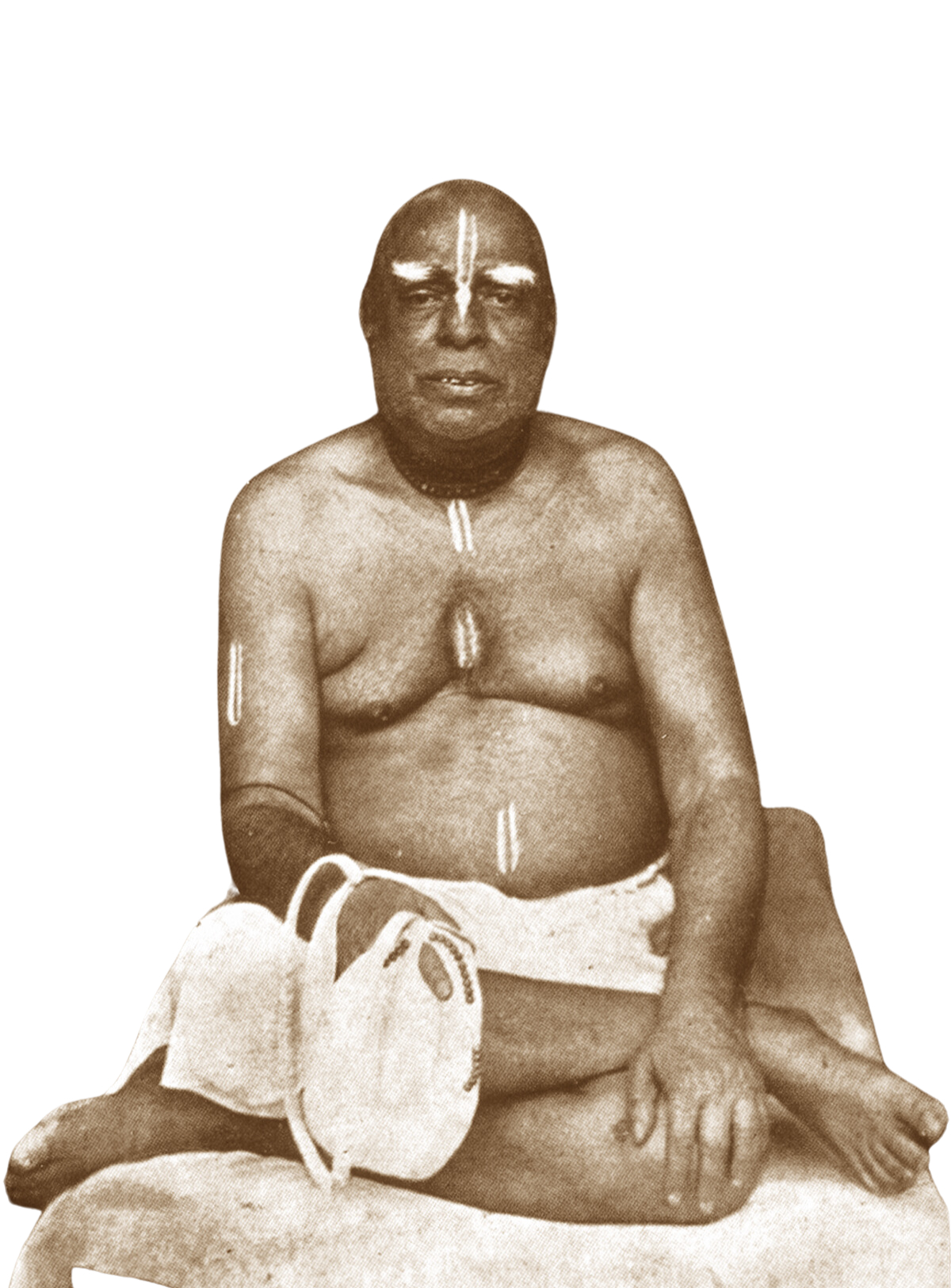 the first verse of Śrī Śikṣāṣṭaka: ceto-darpaṇa-mārjanam bhavamahā-dāvāgni-nirvāpaṇaṁ. We then understand and practice the second verse: nāmnām akāri bahudhā nija-sarva-śaktis. And then the third: tṛṇād api sunīcena taror iva sahiṣṇunā. If we factually adopt the qualities delineated therein, we may enter the fourth: na dhanaṁ na janaṁ na sundarīṁ. At that time we are detached from worldly desires and tastes. When we become still more pure, when we are always chanting and remembering Kṛṣṇa without being disturbed by any obstacle, we can then enter the fifth: ayi nanda-tanuja kiṅkaraṁ.
the first verse of Śrī Śikṣāṣṭaka: ceto-darpaṇa-mārjanam bhavamahā-dāvāgni-nirvāpaṇaṁ. We then understand and practice the second verse: nāmnām akāri bahudhā nija-sarva-śaktis. And then the third: tṛṇād api sunīcena taror iva sahiṣṇunā. If we factually adopt the qualities delineated therein, we may enter the fourth: na dhanaṁ na janaṁ na sundarīṁ. At that time we are detached from worldly desires and tastes. When we become still more pure, when we are always chanting and remembering Kṛṣṇa without being disturbed by any obstacle, we can then enter the fifth: ayi nanda-tanuja kiṅkaraṁ.
Entrance into this fifth verse is the beginning of siddha-deha, at which time we realize ourselves as eternal servants of Kṛṣṇa in a specific relationship. The potency of a fully grown tree is present in the seed of that tree. With water, air, and light, the seed sprouts, and gradually leaves, branches, flowers, mañjarīs, and finally fruits, also manifest. The entire tree or creeper is there in its seed, but all its features sprout only when air, water, and sunlight touch it. Similarly, the full potency of our eternal sentiments of love for the very Soul of all, Śrī Kṛṣṇa, is dormant in our souls, but it awakens only by adopting the pure bhakti process. In this fifth verse, the intrinsic form and nature of the soul are revealed.
The sixth verse of Śrī Śikṣāṣṭaka states:
nayanaṁ galad-aśru-dhārayā
vadanaṁ gadgada-ruddhayā girā
pulakair nicitaṁ vapuḥ kadā
tava nāma-grahaṇe bhaviṣyati
[O Prabhu! When will My eyes be filled with a stream of tears? When will My voice choke up? And when will the hairs of My body stand erect in ecstasy as I chant Your holy name?]
When a devotee realizes his ātmā, his pure soul, and understands that he is an eternal servant of Kṛṣṇa, he no longer has any worldly attachments. At this stage the svarūpa-śakti, as hlādinī and saṁvit, mercifully manifests in his heart.*** He begins to weep, and, while chanting the holy name of Kṛṣṇa, he rolls on the earth and sings, “Agha-damana (O Kṛṣṇa, killer of the Agha demon), Yaśodānandana (O son of Yaśodā), Nanda-sūnoḥ (O, son of Nanda Mahārāja), where are You?”
The devotee may sometimes get a glimpse of Kṛṣṇa and immediately run towards Him. And then, when Kṛṣṇa goes out of sight, that devotee rolls on the ground in separation. Without our feeling this type of separation, our constitutional form does not manifest. Those who artificially exhibit emotions of separation will go to hell, like the thousands of sahajiyā bābājīs in Vṛndāvana and Rādhā-kuṇḍa who are simply illicitly giving birth to children and engaging in other malpractices.
One of the brothers of Śrīla Bhaktisiddhānta Sarasvatī Ṭhākura used to think that his father, Śrīla Bhaktivinoda 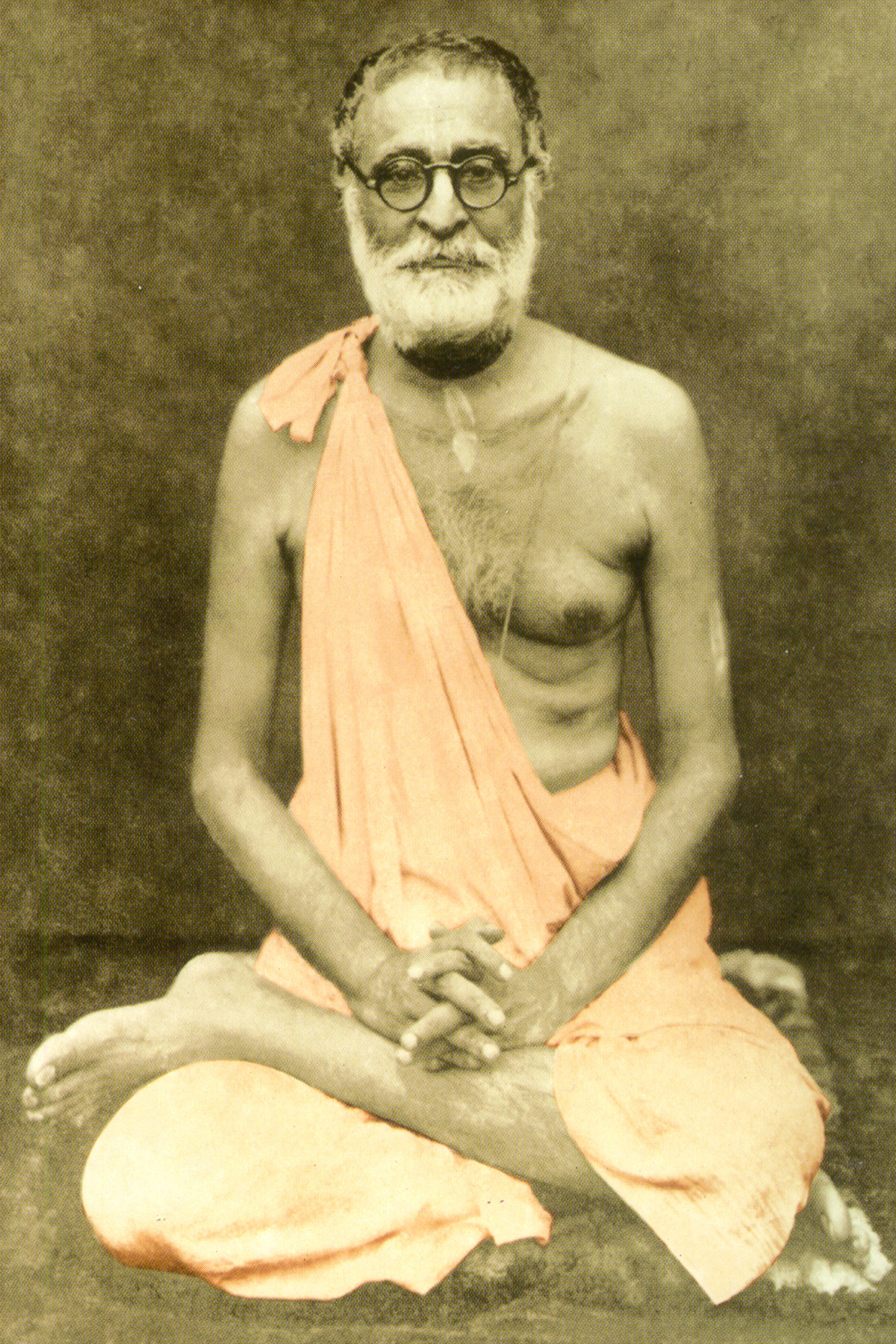 Ṭhākura, was his physical body. He thought of himself as the son of Kedarnātha Daṭṭa (Śrīla Bhaktivinoda Ṭhākura’s civil name), not Śrīla Bhaktivinoda Ṭhākura. On the other hand, Śrīla Bhaktisiddhānta Sarasvatī Ṭhākura considered his father to be an associate of Śrī Kṛṣṇa, Śrīmatī Rādhārāṇī, and Śrī Caitanya Mahāprabhu. He never considered him his material father, a person made of blood and flesh. Śrīla Bhaktisiddhānta Sarasvatī Ṭhākura actually followed the path of Śrīla Bhaktivinoda Ṭhākura. Whatever his father spoke, he fully accepted and followed.
Ṭhākura, was his physical body. He thought of himself as the son of Kedarnātha Daṭṭa (Śrīla Bhaktivinoda Ṭhākura’s civil name), not Śrīla Bhaktivinoda Ṭhākura. On the other hand, Śrīla Bhaktisiddhānta Sarasvatī Ṭhākura considered his father to be an associate of Śrī Kṛṣṇa, Śrīmatī Rādhārāṇī, and Śrī Caitanya Mahāprabhu. He never considered him his material father, a person made of blood and flesh. Śrīla Bhaktisiddhānta Sarasvatī Ṭhākura actually followed the path of Śrīla Bhaktivinoda Ṭhākura. Whatever his father spoke, he fully accepted and followed.
Our goal is siddha-deha, but what is siddha-deha? And what is siddha-praṇālī (the process that bestows spiritual perfection)? Who started the bābājī version of siddha-deha, in what year did it begin, and from where did it originate? Śrīla Sanātana Gosvāmī and Śrīla Rūpa Gosvāmī are called Gosvāmī, not Bābājī. No one has given them the title Rūpa Bābājī, Sanātana Bābājī, or Śrīla Raghunātha dāsa Bābājī. At the time of Śrīla Viśvanātha Cakravartī Ṭhākura, no one addressed him as Viśvanātha Cakravartī Bābājī. During his time, the process of giving someone this bogus version of gopī-bhāva was not practised. No one gave this bābājī siddha-praṇālī to them.
What is siddha-praṇālī? Siddha-praṇālī is Śikṣāṣṭaka – from the first verse. To follow the third verse, beginning with tṛṇād api sunīcena, one requires this awareness, “I am the eternal servant of Śrī Kṛṣṇa, Śrī Caitanya Mahāprabhu, and Śrī Nityānanda Prabhu.” Upon this platform of understanding, that devotee becomes detached from worldly attractions and chants and remembers Kṛṣṇa twenty-four hours a day under the guidance of any very qualified Vaiṣṇava.
tan-nāma-rūpa-caritādi-sukīrtanānu-
smṛtyoḥ krameṇa rasanā-manasī niyojya
tiṣṭhan vraje tad-anurāgi-janānugāmī
kālaṁ nayed akhilam ity upadeśa-sāram
(Upadeśāmṛta, Verse 8)
[While living in Vraja as a follower of the eternal residents of Vraja, who possess inherent spontaneous love for Śrī Kṛṣṇa, one should utilize all his time by sequentially engaging the tongue and the mind in meticulous chanting and remembrance of Kṛṣṇa’s names, form, qualities, and pastimes. This is the essence of all instruction.]
Śrīla Raghunātha dāsa Gosvāmī has explained this siddha-praṇālī in his prayer called Manaḥ-śikṣā. All the verses of his prayer are praṇālī, not artificial imaginings.
From where and from whom has this artificial siddha-deha come? There is no history. It is not in our culture, nor is it the teaching of Śrī Caitanya Mahāprabhu. Real siddha-deha and siddha-praṇālī manifest when we follow the correct process – beginning with taking complete shelter of guru (guru-kāraṇa), worshipping him (guru-bhajana), serving him under his direction (guru-sevā), and after that, bhajana-praṇālī. It comes by adopting, with purity, the process of hearing, chanting, remembering the Lord, serving the Lord’s lotus feet, worshipping Him, offering Him prayers, becoming His servant, becoming His friend, and surrendering everything to Him. It comes by:
sādhu-saṅga, nāma-kīrtana, bhāgavata-śravaṇa
mathurā-vāsa, śrī-mūrtira śraddhāya sevana
Śrī Caitanya-caritāmṛta (Madhya-līlā 22.128)
[In the association of devotees one should chant the holy name of the Lord, hear Śrīmad-Bhāgavatam, reside in Mathurā, and worship the Deity with faith and reverence.]
By following these processes, Śrī Kṛṣṇa and Śrīmatī Rādhikā will mercifully give us our perfect form, that form which is fit to serve Them.
Śrīmad-Bhāgavatam states that Nārada Muni received his mantra from Sanaka, Sanandana, Sanātana, and Sanat-kumāra. Later, as soon as his mother died, he left for the dense forest. There he bathed in a river, sat down silently under the shade of a banyan tree, chanted his mantra, and meditated upon the Supersoul within his heart. After practising this for many years, Lord Viṣṇu momentarily manifested in his heart and then vanished.
As mentioned earlier, Nārada wept bitterly in separation from Lord Viṣṇu, and then a voice from the sky called to him, “Nārada, I will not give you darśana again as long as you are in this material body. Continue chanting My name, remembering Me, and glorifying My pastimes all over the world. At the appropriate time, when death comes, you will put your feet on the head of death and be liberated.” ****
Following Viṣṇu’s instruction, Nārada always chanted and remembered the Lord, and while playing on his vīṇā, he sang songs and poems glorifying the pastimes of Kṛṣṇa. For example, he sang rādhā-ramaṇa haribol. Śrīla Bhaktivinoda Ṭhākura also wrote about many pastimes of Kṛṣṇa and His devotees in his poetries and songs. He wrote a song beginning [with the words], “nārada muni, bājāya vīṇā, rādhikā-ramaṇa-nāme – Nārada Muni plays his vīṇā while chanting the glories of Rādhā and Kṛṣṇa.”
He also wrote:
yaśomatī-nandana, braja-baro-nāgara,
gokula-rañjana kāna
gopī-parāṇa-dhana, madana-manohara,
kālīya-damana-vidhāna
[Kṛṣṇa is the beloved son of Mother Yaśodā, the topmost hero of Vraja, the delight of Gokula, and Kāna (an 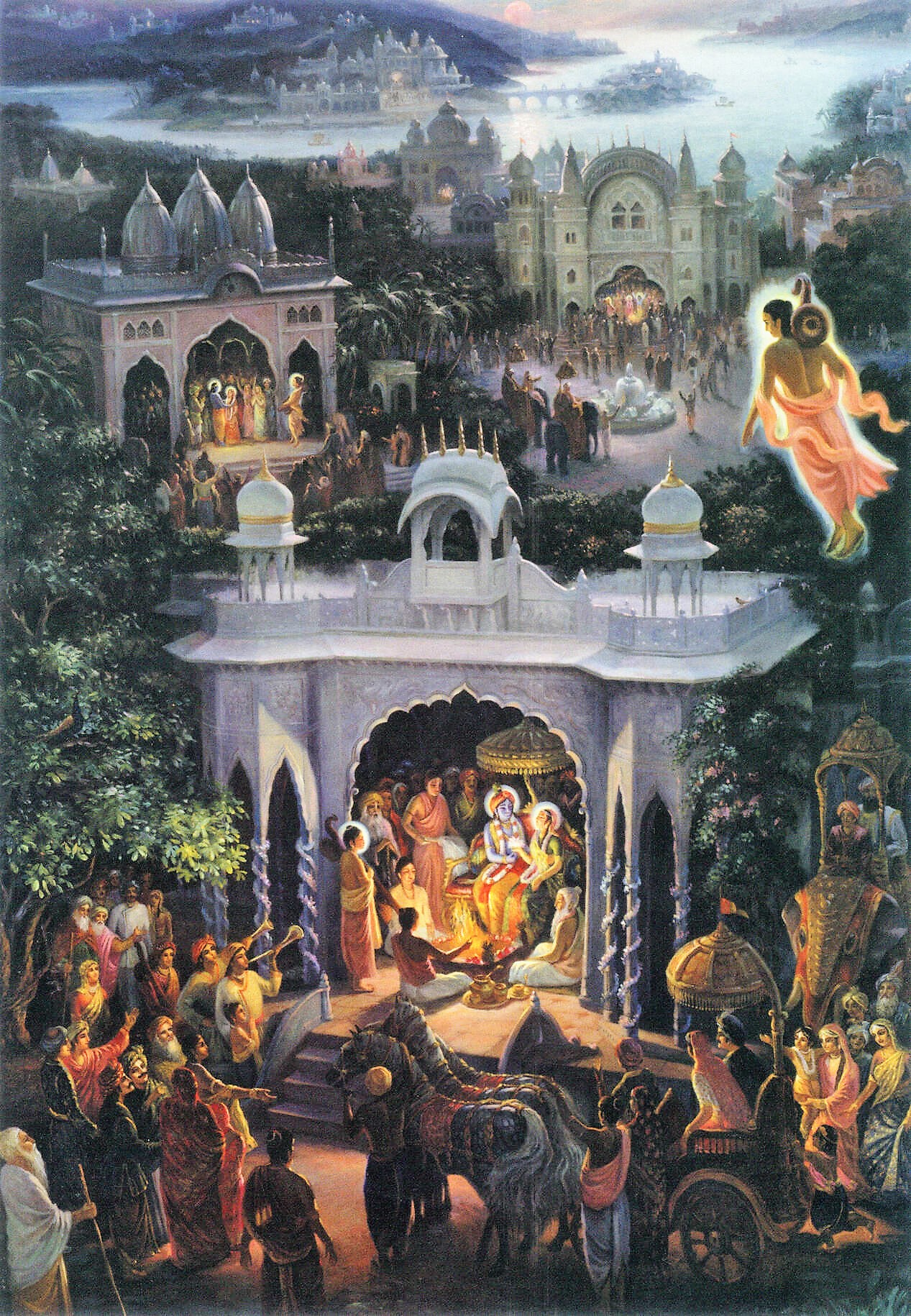 affectionate nickname for Kṛṣṇa). He is the treasure of the lives of the gopīs, the enchanter of even Cupid, and the punisher of the serpent Kāliya.]
affectionate nickname for Kṛṣṇa). He is the treasure of the lives of the gopīs, the enchanter of even Cupid, and the punisher of the serpent Kāliya.]
After many years, Nārada left his mortal body. At that same moment his siddha-deha manifested, and in that siddha-deha he became so powerful that he could travel anywhere in the universe or beyond. Unlike Dhruva Mahārāja, Nārada did not require the help of an aeroplane to transport him to Vaikuṇṭha.
We should try to know all of the processes taught by Śrīla Bhaktivinoda Ṭhākura (This is given especially in Śrīla Bhaktivinoda Ṭhākura’s Śrī Harināma-cintāmaṇi and Jaiva-dharma). This particular process is given when the disciple is in an advanced stage of bhakti: śravaṇa-daśā (the stage of hearing), varaṇa-daśā (the stage of thirsting for spiritual emotions), smaraṇa-daśā (the stage of remembrance of the Lord and His intimate associates)*****, bhāvāpaña-daśā (the stage of uninterrupted remembrance and ecstatic spiritual sentiments in bhāva-bhakti, or svarūpa-siddhi), and finally prema-sampatti-daśā (attaining the ultimate goal, love of Godhead). It is in sampatti-daśā that one fully realizes his siddha-deha (this stage is also known as vastu-siddhi, the spiritual body receiving direct darśana and service of the Lord and His associates)******.
In śravaṇa-daśā, the stage of hearing, one hears about the process to attain perfection from his bona fide guru from Vedic scriptures like Śrīmad-Bhāgavatam, Śrī Caitanya-caritāmṛta, Jaiva-dharma, and the entire philosophy of Śrīla Rūpa Gosvāmī. In śravaṇa-daśā there are many things to learn, such as one’s name and identity – not the name of one’s material body, but of his transcendental body.
The true guru knows this. A false guru does not know this, but by imagination gives this type of information. The bona fide guru knows everything: your name, your relationship with Śrī Kṛṣṇa, Śrīmatī Rādhikā, and the gopīs, your place of residence – whether it is at Rādhā-kuṇḍa, Jāvaṭa, Nandagaon, or Varṣāṇa – the name of your father and mother, your service, and the nature of your beautiful form. He then reveals your particular service to Rādhā-Kṛṣṇa conjugal, and your pālya-dāsī-bhāva, your nature as a maidservant of Śrīmatī Rādhikā. As mentioned earlier, there are eleven items in all.
To teach this actual process was the main objective of Śrīla Bhaktivinoda Ṭhākura, whose teachings he summarized in two lines: “jīva dayā kṛṣṇa-nāma, sarva-dharma-sāra – Shower mercy on all the jīvas, seeing them as Śrī Kṛṣṇa’s, and completely surrender unto the Holy Name of Śrī Kṛṣṇa. This is the essence of all religious principles.” This is also the sum and substance of all the teachings of all the Vedas, Vedānta, 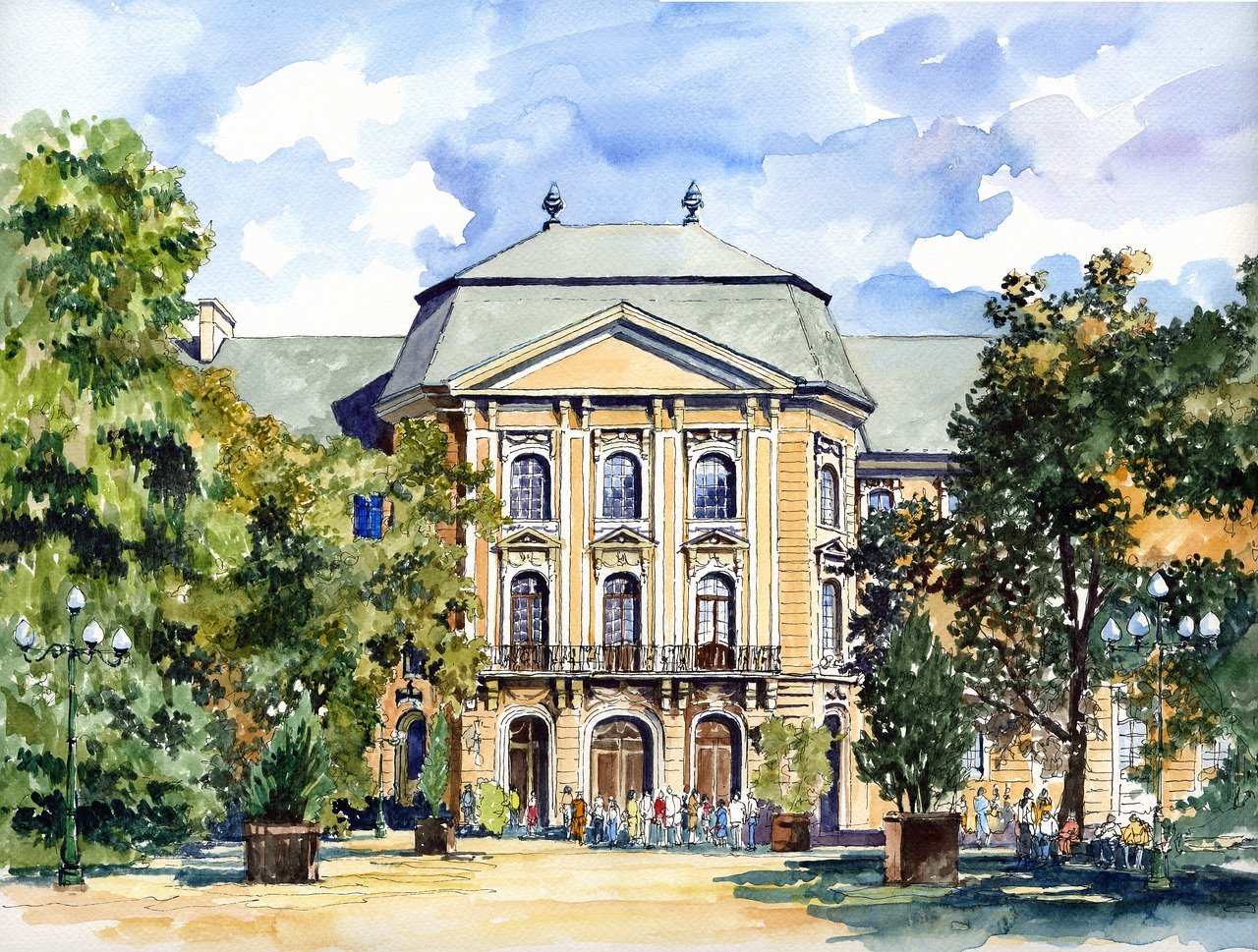 Upaniṣads, Bhagavad-gītā, the Purāṇas, Śrutis, Smṛtis, and Pañcarātra.
Upaniṣads, Bhagavad-gītā, the Purāṇas, Śrutis, Smṛtis, and Pañcarātra.
In essence, there are two principles: jīva dayā and kṛṣṇa-nāma. The meaning of jīva dayā is ‘mercy to conditioned souls.’ Śrīla Bhaktivinoda Ṭhākura has elaborately explained that the best dayā, or mercy, is turning conditioned souls from their worldly moods to the mood of service to Kṛṣṇa. It is worth more than opening hundreds of thousands of hospitals and universities or donating hundreds of thousands of dollars to charity. Jīva-dayā is the most special gift, and it is given by the realized soul.
harer nāma harer nāma
harer nāmaiva kevalam
kalau nāsty eva nāsty eva
nāsty eva gatir anyathā
Śrī Caitanya-caritamrta (Ādi-līlā 17.21)
[In this age of quarrel and hypocrisy, the only means of deliverance is the chanting of the holy name of the Lord. There is no other way. There is no other way. There is no other way. ]
Jīva dayā is attained only by chanting Kṛṣṇa’s holy name. Kṛṣṇa’s name is Kṛṣṇa Himself, but we can chant śuddha-nāma, the pure name devoid of all offences and misconceptions on the part of the chanter, only in the association of the bona fide guru and bona fide Vaiṣṇavas. Without this association we can neither chant the pure name nor engage in pure śuddha-bhakti.
What is śuddha-bhakti, or pure devotion? We may think that vaidhī-bhakti, devotion prompted by the regulations of the scriptures, is śuddha-bhakti, but it is not, nor will it ever become so. Śuddha-bhakti is rāgānuga-bhakti, or devotion impelled by greed to follow in the footsteps of the personal associates of Śrī Śrī Rādhā-Kṛṣṇa.******* When the practice of rāgānuga-bhakti fully matures, it is then called rāgātmika-prema, or the love of Kṛṣṇa’s associates in Vṛndāvana. In other words, when the sincere devotee desires rāgātmika-prema, he cultivates its attainment with all of his senses; this is called rāgānuga, or devotion performed in the wake of the rāgātmika-bhaktas.
When one’s heart accepts the same mood that Śrīla Rūpa Gosvāmī possesses, the mood of a pālya-dāsī of Śrīmatī Rādhikā, this is called rūpānuga-bhakti.
We conditioned souls are eligible to become pālya-dāsīs, maidservants of Śrīmatī Rādhikā. We cannot become like Lalitā or Viśākhā, whose position as direct beloveds of Kṛṣṇa is beyond our limit of attainment. We can follow only Śrīla Rūpa Gosvāmī or Rūpa Mañjarī, Rati Mañjarī, Lavaṅga Mañjarī, and all the other mañjarīs. The sahajiyā bābājīs’ utterance of “Oh, you are Lalitā. I am Lalitā,” is nothing but māyāvāda philosophy (the doctrine of illusion and impersonalism) or monism – artificial imitation.
Śrīla Bhaktivinoda Ṭhākura foretold that in the near future many hundreds of thousands of Western devotees 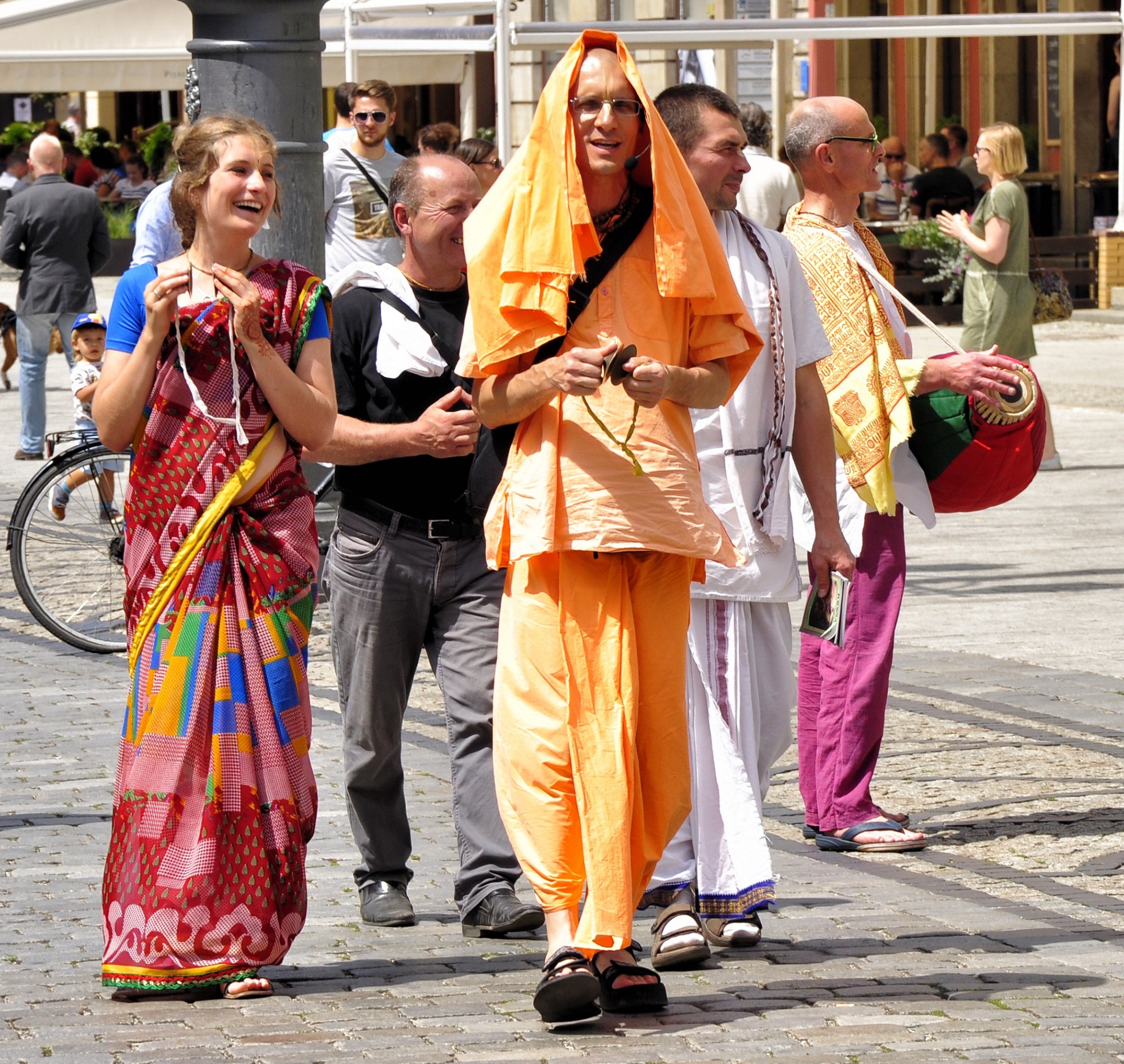 with śikhā and tulasī-mālā will meet with Indian devotees, and they will all chant together, “haribol, haribol,” “gaura premānande hari haribol,” and, “hare kṛṣṇa hare kṛṣṇa kṛṣṇa kṛṣṇa hare hare, hare rāma hare rāma rāma rāma hare hare.” Thus, all over the world the pure mission of Śrī Caitanya Mahāprabhu will spread. This idea was started by Śrīla Bhaktivinoda Ṭhākura. He is the root of all our preaching, and therefore we are truly indebted to him.
with śikhā and tulasī-mālā will meet with Indian devotees, and they will all chant together, “haribol, haribol,” “gaura premānande hari haribol,” and, “hare kṛṣṇa hare kṛṣṇa kṛṣṇa kṛṣṇa hare hare, hare rāma hare rāma rāma rāma hare hare.” Thus, all over the world the pure mission of Śrī Caitanya Mahāprabhu will spread. This idea was started by Śrīla Bhaktivinoda Ṭhākura. He is the root of all our preaching, and therefore we are truly indebted to him.
* “Prākṛta-sahajiyās are those who understand the transcendental pastimes (aprākṛta-līlā) of the transcendental Supreme Lord to be prākṛta, or mundane, like the affairs of ordinary men and women, and who think that the aprākṛta-tattva (transcendental truth) is attained by a material practice” (Ācārya Kesarī Śrī Śrīmad Bhakti Prajñāna Keśava Gosvāmī – His Life and Teachings, Part Six).
** An excerpt from Ācārya Kesarī Śrī Śrīmad Bhakti Prajñāna Keśava Gosvāmī – His Life and Teachings, Part Six:
After Śrīla Viśvanātha Cakravartī Ṭhākura and Baladeva Vidyābhūṣaṇa, a dark age began in Śrīman Mahāprabhu’s Gauḍīya sampradāya, during which the current of śrī rūpānuga-bhakti became somewhat impaired. Various kinds of speculative malpractices and opinions opposed to śuddha-bhakti seeped into the true conception. At that time the situation became so dire that the educated and cultured section of society began to abhor even the name of Gauḍīya Vaiṣṇavism, having witnessed the misconduct of its so-called followers. In this way the Gauḍīya Vaiṣṇava sampradāya became distanced from the intelligentsia and respected society.
*** An excerpt from Ācārya Kesarī Śrī Śrīmad Bhakti Prajñāna Keśava Gosvāmī – His Life and Teachings, Part Five:
Kṛṣṇa’s svarūpa, or form, is composed of eternity (sat), knowledge (cit), and bliss (ānanda). Therefore His svarūpa-śakti manifests in three forms. From ānanda comes hlādinī-śakti (the pleasure potency), from sat comes sandhinī (the existence potency), and from cit comes saṁvit-śakti (the knowledge potency). Saṁvit-śakti is also called jñāna-śakti. Hlādinī-śakti makes Kṛṣṇa joyful (āhlādit), which is why its name is hlādinī. By this śakti, Kṛṣṇa, the embodiment of bliss, tastes pleasure and enables the devotees to also taste transcendental happiness. The essence of this hlādinī is prema (transcendental love), a phenomenon entirely composed of transcendental rasa, and is the embodiment of bliss itself. The concentrated essence of prema is called mahābhāva.[1] The embodiment of this mahābhāva is Śrīmatī Rādhikā. This is a summary introduction to the identity of śakti. […]
What is this bhakti? We shall describe its intrinsic characteristic (svarūpa-lakṣaṇa) and its marginal characteristics (taṭasthā-lakṣaṇa). Its intrinsic characteristic is the full endeavour by body, mind and speech, and the cultivation of loving sentiments (bhāva) for the pleasure of Kṛṣṇa. Endeavours and bhāvas – these two remain ever-active to bring Kṛṣṇa delight. The svarūpa-lakṣaṇa, the intrinsic nature of bhakti, arises when the special function of Bhagavān’s svarūpa-śakti (the function of the essence of hlādinī and saṁvit) appears in the svarūpa of the jīva by the mercy of Śrī Kṛṣṇa or His devotee.
[1] “The essence of the hlādinī-śakti is love of Godhead, the essence of love of Godhead is bhāva, or transcendental sentiment, and the highest pitch of that bhāva is called mahābhāva. Śrīmatī Rādhārāṇī is the personified embodiment of these three aspects of transcendental consciousness. She is therefore the highest principle in love of Godhead and is the supreme lovable object of Śrī Kṛṣṇa” (Śrī Caitanya-caritāmṛta, Ādi-līlā 4.69).
**** This means that when Nārada leaves his body at the time of death, he will not suffer any pain or unhappiness, as do ordinary conditioned souls. Moreover, he will immediately attain his eternal spiritual form and eternal service to the Lord –Ed.
***** An excerpt from Śrī Bhajana-rahasya, Chapter 6, Text 7:
Because meditative remembrance (smaraṇa) is predominant in spontaneous devotion (rāgānuga-bhakti), some persons, who still have anarthas and in whose hearts genuine attachment to Kṛṣṇa has not yet appeared, make a deceitful display of solitary bhajana and, considering themselves rāgānuga devotees, they practice what they call aṣṭa-kālīya-līlā-smaraṇa. However, Bhakti-rasāmṛta-sindhu (1.2.101) quotes from the āgama-śāstras as follows:
śruti-smṛti-purāṇādi-
pañcarātra-vidhiṁ vinā
aikāntikī harer bhaktir
utpātāyaiva kalpate
If a person violates the regulations mentioned in the Śruti, Smṛti, Purāṇas, and the Nārada-pañcarātra, great misgivings (anarthas) are produced, even though he may be engaged in one-pointed devotion to Hari.
****** An excerpt from Śrī Harināma-cintāmaṇi, Chapter 15:
When a sādhaka devotee, having heard about Lord Kṛṣṇa’s pastimes, is attracted to the conjugal mellow, he should take further instruction on rasa from a realized, saintly spiritual master. This is called the stage of hearing or śravaṇa-daśā. When the sādhaka devotee anxiously and eagerly accepts the conjugal mellow, varaṇa-daśā commences. Then, by pure remembrance of the sentiments of rasa, he desires to practice them; he then reaches the third stage, smaraṇa-daśā. When he can perfectly invoke these sentiments of rasa, he attains āpana-daśā, or prāpti-daśā. Finally, when he can separate himself from all his temporal material designations and is steadily fixed in that original spiritual identity for which he yearns, he has reached sampatti-daśā – the inheritance of his spiritual identity.
******* An excerpt from a lecture by Śrīla Bhaktivedānta Svāmī Mahārāja on Śrīmad-Bhāgavatam 2.33, spoken in Vṛndāvana on November 12, 1972:
So you have to uncover. You have to discover. That discovering process is devotional service. The more you are engaged in devotional service, the more your senses become pure or uncovered. And when they are completely uncovered, without any designation, then you are capable to serve Kṛṣṇa. This is apprenticeship. Vaidhī-bhakti (devotion prompted by the regulations of the scriptures).
Śrī Caitanya-caritāmṛta, Madhya-līlā 22.149 states:
The original inhabitants of Vṛndāvana are attached to Kṛṣṇa spontaneously in devotional service. Nothing can compare to such spontaneous devotional service, which is called rāgātmika-bhakti. When a devotee follows in the footsteps of the devotees of Vṛndāvana, his devotional service is called rāgānuga-bhakti.
Source: Purebhakti.com
Image(s) made possible by Shutterstock, Pixabay.com, Krishnapath.org and/or Bhaktiart.net
Unless indicated differently, all verse translations and quotes are from the books by Śrīla Prabhupāda (Vedabase.com)
[ad_2]
#Bona #Fide #Process #Śrī #Śikṣāṣṭaka







